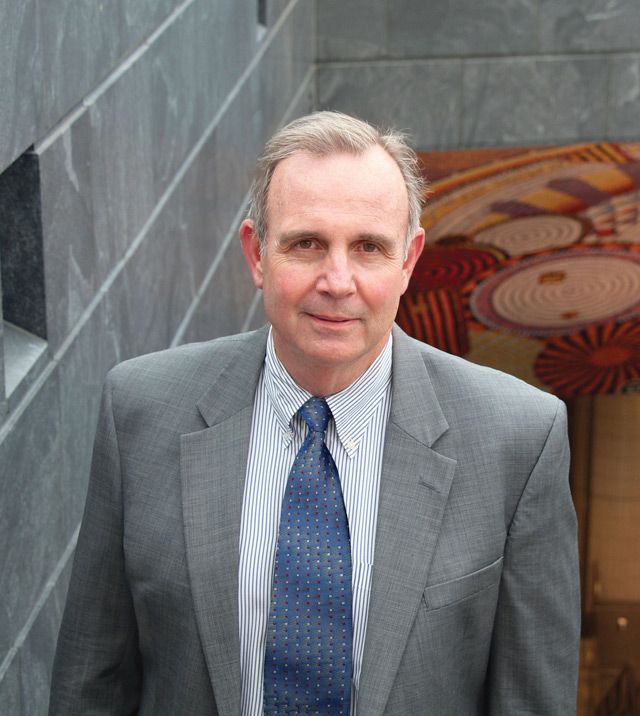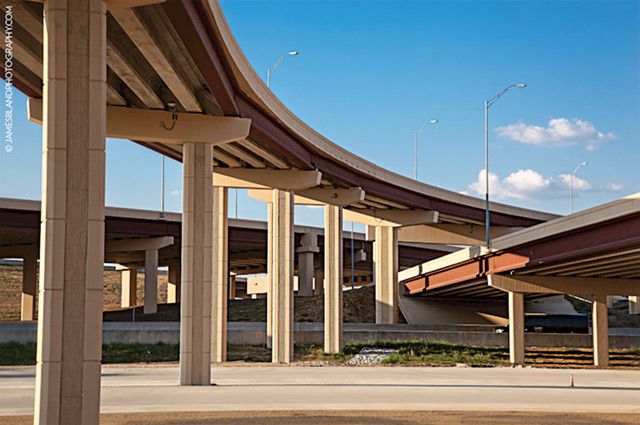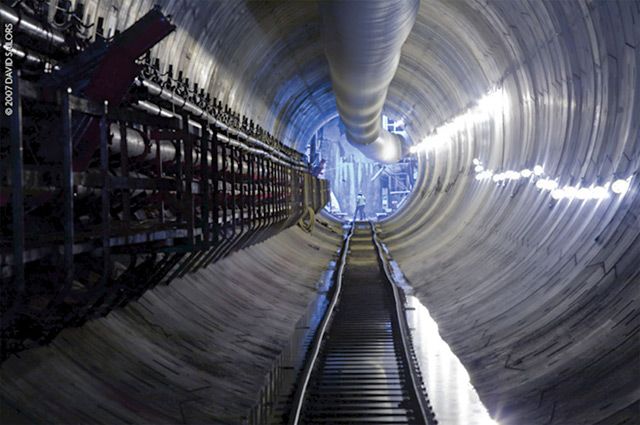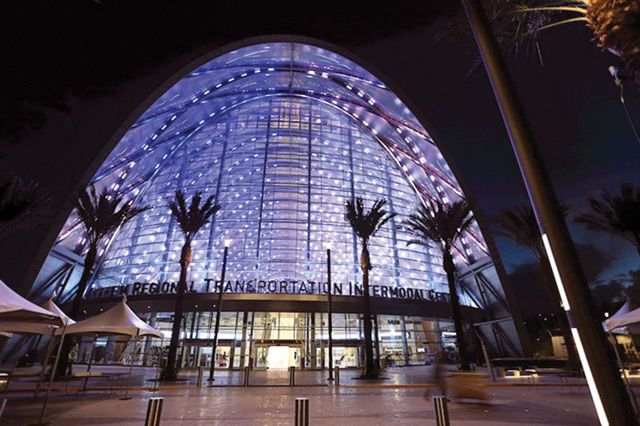Balancing resiliency and sustainability in an age of constant change
Clifford C. Eby ’73 is former president of the U.S. Transportation sector for WSP | Parsons Brinckerhoff, a global engineering and professional services organization. In that leadership role, he led 4,000-plus planners, engineers and managers. Previously, as senior vice president for Parsons Brinckerhoff’s Technical Excellence Centers, Eby supported the firm’s strategic efforts in rail and infrastructure markets, particularly high-speed rail. He has worked more than 40 years in the transportation industry, with expertise in rail safety, regulatory practices, transportation policy and rail infrastructure design. Eby has also served as acting administrator of the Federal Railroad Administration. He holds a B.S. in civil engineering from Lehigh and an MBA from George Washington University.
Q: How do you define resilient infrastructure?
A: I think of resilient infrastructure as assets— such as buildings, transportation, water, power—that have the ability to create long-term public value over periods of social, economic, political, and environmental change. The ability to recover from short-term disruptions has been a recent focus— can you recover quickly from a disaster? I have no problem with that, but we need to ask if that rapid recovery makes economic sense. Designing resilient systems and improving “mean time between failures” generally come with a cost. Resiliency, like quality, needs to meet user requirements.
Q: How long has resiliency been an issue for civil engineers?
A: You could say the profession of civil engineering was founded on the need for resiliency. Owners and master builders could not afford to invest in buildings or infrastructure that wouldn’t provide longterm public value. For the past 100 years, the civil engineering role in public infrastructure has primarily been design. Engineers have generally done a goodjob of increasing size, strength, speed and capacity of infrastructure assets, while using fewer resources. Recent use of alternative project delivery has moved ownership responsibilities back into the engineer’s portfolio.
Q: The United Nations’ Brundtland Commission defined a sustainable society as one that meets its needs without limiting the ability of future generations to meet theirs. Is the concept of resilient infrastructure compatible with these aspirations?
A: In general, resiliency focuses on the performance of resources over the life cycle while sustainability focuses on the use of resources over the life cycle. The two—resiliency and sustainability—can be completely compatible. But one does not necessarily drive the other. You can have something that performs very well over the life cycle and is extremely resilient, but uses tons of resources. That would not measure up to the sustainability model. You can also have something sustainable but not resilient. A solar power system, for example, is sustainable but may not be resilient to some weather conditions.
To me, a big issue on sustainability is the hidden, unknown cost — so-called externalities. As you use up environmental resources with no way of passing that cost on to the consumer, that enters into the sustainability side of the economics. On the resiliency side, the question becomes this: Is that asset providing consistent economic benefit or public value over its life? That’s the distinction I’m trying to make.
Q: How can policy makers promote a safer, more resilient, more sustainable infrastructure?
A: Policy makers must play a central role. Take auto safety. Despite years of focusing on vehicle safety and a declining percentage of deaths, we still accept more than 30,000 motor-vehicle-related deaths per year. Today’s vehicles are becoming connected and automated. Roadways can collect data and even charge electric vehicles. The traveling public has more information than ever about how to get around. These new technologies can all but eliminate our leading national cause of accidental death, but we need supportive laws, regulations and policies to create new infrastructure. WSP | Parsons Brinckerhoff is a leader in promoting these policies. One of our young engineers recently published guidelines on how local governments can plan for driverless vehicles. I’m confident we will see a much safer driving environment in the next decade.
Q: How do resiliency and sustainability align with the goals of creating smart, attractive city habitats with reduced size and scope of infrastructure?
A: They align well, but we must be mindful of changing demographics and related needs. Population growth is often viewed as a constant, but it’s affected by two variables—improved longevity and replacement levels, or children per couple. Analyzing these independently informs us why some K-12 schools closed in the 1980s and 1990s but now may be reopening. And why 65-year-olds may not be looking for retirement living. City leaders and investors who research these trends, who plan with some flexibility, and who evaluate multiple design options will have a greater likelihood of producing resilient and sustainable infrastructure.
Q: What are the special challenges of infrastructure design in megacities? What about in the developing world, given their fast-growing populations and acute need for housing and transportation services?
A: Resiliency and sustainability needs for the developing world are significantly different from the projects I work on. New York City, for example, has extended the No. 7 subway from Times Square to 34th Street and is erecting buildings over the train marshaling area near Penn Station, the so-called Hudson Yard Overbuild. Both projects are resilient and sustainable.
For developing countries, I suspect rural agricultural roads, drinking and agricultural water, and hospitals are likely to provide higher returns on infrastructure investment. I look to organizations such as the Millennium Challenge Corporation or the Gates Foundation as informed sources.
Q: How do the challenges of designing resilient transportation infrastructure differ from the challenges of designing skyscrapers?
A: Transportation infrastructure, bridges and tall buildings are long-lived assets and, in general, have very similar resiliency challenges. One unique aspect of transportation assets is the network they create—rails, railcars, highways, taxis, private vehicles—and the great mix of public and private resources they rely on. When those networks are efficient, positive social and economic effects are multiples of a single project.
Another difference is that skyscrapers typically stand on one property. Transportation crosses physical and geopolitical boundaries. That creates a new set of challenges and usually involves many more public and private stakeholders whose interests need to be met during the life of an asset.
Q: You have said that the creation of resilient transportation systems requires a better understanding of travel demands and the value of time. Please explain.
A: For transportation, travel time is a major factor in determining the value of the service. From our work on the Northeast Corridor Environmental Impact Statement [the rail corridor linking Washington, D.C., New York City and Boston], we see declining travel-time value when compared to prior years. For example, slower, but less expensive bus service is growing rapidly, because the value that passengers once put on time is declining.
I speculate that for many, being connected to the Internet and the opportunity to be productive during travel reduce the value of getting there quickly and make shorter travel time less important. If your transportation mode can become a moving office, or be more entertaining, it will have a profound effect on future infrastructure needs.
Q: You have worked four decades in America’s transportation infrastructure. How would you rate its resiliency?
Much better than ever expected. Our infrastructure failures are remarkably small and are primarily due to lack of maintenance of public assets. Extreme flooding is an area of concern and is occurring much more frequently and severely than predicted by 50- and 100-year storm criteria. It’s a good example of where engineers need to assess options beyond the code to ensure resiliency.




